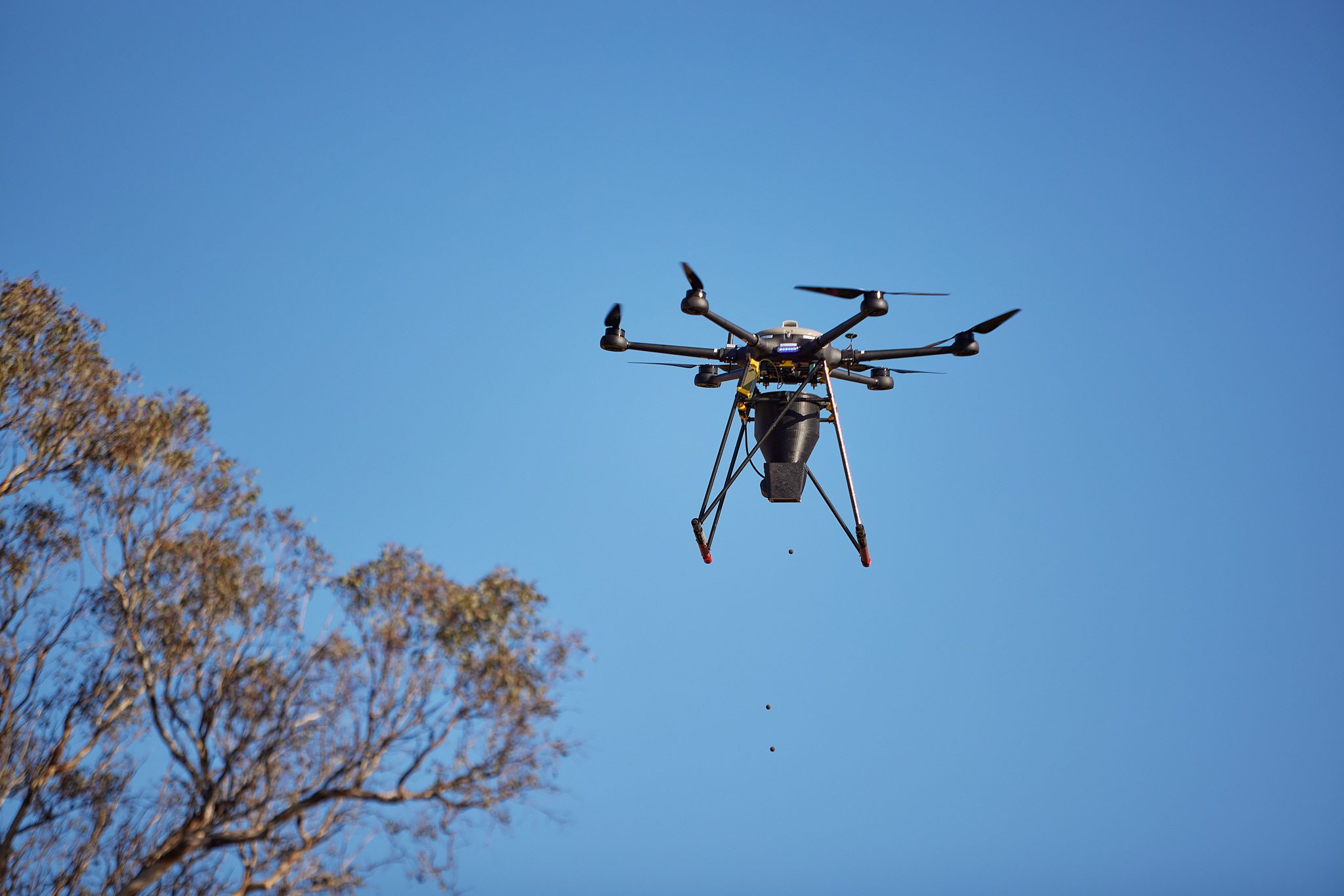In an exciting new development in ecological restoration, researchers from the Monash Warwick Alliance have published a ground-breaking study in the Journal of People and Nature that explores the integration of drones into forest restoration efforts. The study, a collaborative international effort led by researchers Coldrey and Thompson, marks a significant first in understanding stakeholder perceptions of drone-assisted tree planting.
photo courtesy AirSeed Technologies
Unmanned aerial vehicles, commonly known as drones, have been gaining traction across various stages of forest restoration – from planning and implementation to monitoring and maintenance. However, empirical data on how these technologies are perceived by forest restoration managers and stakeholders has been notably scarce. This study fills that critical gap by using a socio-ecological systems framework to examine how drones might be incorporated into existing forest systems in a supportive, rather than disruptive, manner.
Conducted in Victoria and New South Wales, Australia, the research involved detailed interviews and focus groups with key stakeholders, including clients and forest management personnel. The findings highlight the unique advantages drones offer, particularly in accessing and restoring degraded sites that are otherwise difficult or unsafe for humans to reach, such as areas ravaged by bushfires, floods, or landslides.
photo courtesy Greening Australia, by Toby Peet
“Drones present an opportunity to address medium-scale restoration needs effectively,” said Coldrey. “Respondents felt they were especially beneficial in areas of around 20-100 hectares, where they can make a tangible impact without the perceived complications that may arise with larger scales.” The study not only underscores the practical benefits of drones but also promotes their role as a complementary tool in traditional forest restoration methods. This approach can support existing ecological dynamics and community needs, paving the way for a more integrated and sustainable restoration practice.
Looking ahead, the researchers are optimistic about the future role of drones in forest restoration. “With ongoing advancements and increasing stakeholder engagement, drones are set to become a mainstay within forest social-ecological systems, enhancing restoration efforts well into the future,” added Thompson.
The success of this project was enhanced by the collaboration with AirSeed Technologies, who provided valuable access to various stakeholders integral to this research. For more information about the study and its implications, please visit https://besjournals.onlinelibrary.wiley.com/doi/10.1002/pan3.10660.
Read more:
Miriam McNabb is the Editor-in-Chief of DRONELIFE and CEO of JobForDrones, a professional drone services marketplace, and a fascinated observer of the emerging drone industry and the regulatory environment for drones. Miriam has penned over 3,000 articles focused on the commercial drone space and is an international speaker and recognized figure in the industry. Miriam has a degree from the University of Chicago and over 20 years of experience in high tech sales and marketing for new technologies.For drone industry consulting or writing, Email Miriam.
TWITTER:@spaldingbarker
Subscribe to DroneLife here.

